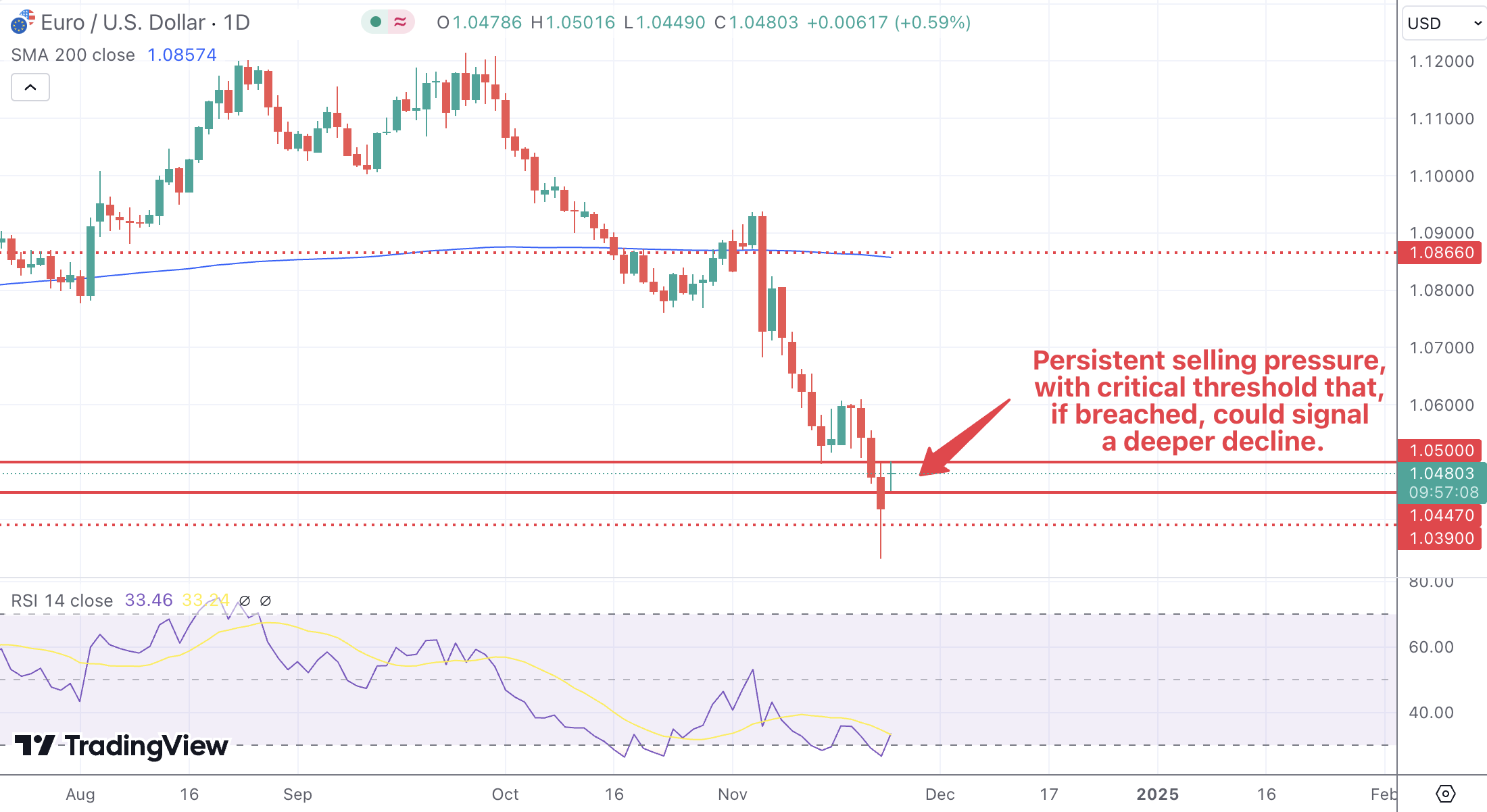Key Takeaways
- The EUR/USD pair remains under bearish pressure, trading below the 1.0500 level, influenced by weaker Eurozone economic data and robust U.S. economic performance.
- Technical indicators suggest key support levels at 1.0447 and 1.0390, with resistance at 1.0500 and the 200-day SMA near 1.0866.
- Diverging economic performances between the Eurozone and the U.S. continue to impact the pair, with expectations of a cautious ECB and a potentially hawkish Federal Reserve.
- Upcoming economic data releases and central bank communications will be critical in shaping the EUR/USD’s trajectory in the near term.
Market Dynamics and Recent Performance
Over the past week, the EUR/USD currency pair has exhibited a bearish trend, influenced by a combination of economic data releases and market sentiment. The euro faced downward pressure following the release of Germany’s Ifo Business Climate Index for November, which declined to 85.7, falling short of the anticipated 86.0. This decline indicates a deterioration in business sentiment within Europe’s largest economy, raising concerns about the broader Eurozone’s economic health.
Conversely, the U.S. dollar demonstrated resilience, bolstered by robust economic indicators. The U.S. Flash Services PMI exceeded expectations, registering at 57.0 against a forecast of 55.2, underscoring the strength of the U.S. services sector. This positive data reinforced the dollar’s position, contributing to the EUR/USD pair’s decline.
Technical and Fundamental Influences
Technically, the EUR/USD pair has been trading below the 1.0500 level, maintaining a bearish outlook. The pair’s inability to sustain gains above this threshold suggests persistent selling pressure. Key support levels are identified at 1.0447, the recent low, and further at 1.0390, a critical threshold that, if breached, could signal a deeper decline. Resistance levels are observed at 1.0500 and 1.0550, with the 200-day Simple Moving Average (SMA) near 1.0866 acting as a significant barrier to any potential upward movement.
Fundamentally, the divergence between the Eurozone and U.S. economic performances continues to influence the pair. The Eurozone’s economic challenges, highlighted by weaker business sentiment and slowing growth, contrast with the U.S. economy’s robust performance, as evidenced by strong PMI data. This disparity has led to expectations that the European Central Bank (ECB) may adopt a more cautious monetary policy stance, while the Federal Reserve could maintain a more hawkish approach, further supporting the dollar.
Looking Forward
In the coming week, market participants will closely monitor several key economic indicators. In the Eurozone, attention will be on inflation data and any statements from ECB officials that could provide insights into future monetary policy directions. In the U.S., the release of the Federal Open Market Committee (FOMC) meeting minutes will be pivotal, as investors seek clues about the Fed’s policy outlook. Additionally, upcoming U.S. economic data, including consumer confidence and the Core Personal Consumption Expenditures (PCE) Price Index, will be scrutinized for further indications of economic strength and inflationary pressures.


